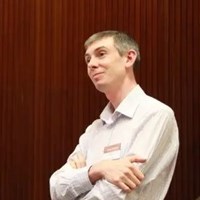People
Professor Paul David Ledger
Professor of Applied Mathematics

School/Department: Computing and Mathematical Sciences, School of
Email: pdl11@leicester.ac.uk
Profile
I am an interdisciplinary Applied Mathematician and Engineer working at the interface of Applied Mathematics, Computer Science and Engineering. I completed my PhD in 2002 in Computational Electromagnetism at Swansea University under the supervision of Professor Ken Morgan. For my doctoral work, I was awarded the inaugural ECCOMAS best PhD Thesis in Computational Science and Engineering award.
My post-doctoral work included two years at the Seminar for Applied Mathematics, ETH Zurich in Switzerland where I worked with Professor Ralf Hiptmair and a year at the Zurich University of Applied Sciences as a Research Associate and Lecturer.
Between 2006-2020 I worked at Swansea University as a Lecturer and then Associate Professor in the Faculty of Science and Engineering and was part of the Zienkiewicz Centre for Computational Engineering (now Zienkiewicz Institute for Modelling, Data & AI). From 2020-2024 I worked at the School of Computer Science & Mathematics, Keele University, where I was promoted to the position of Professor of Computational Mathematics. I joined the University of Leicester on 1st August 2024 and hold honorary positions at Swansea University and at Keele University.
I am a Chartered Mathematician and Member of Institute of Mathematics and its Applications (CMath MIMA). I am a member of the Society of Industrial and Applied Mathematics (SIAM) and a member of the London Mathematical Society. I am also a Fellow of the Higher Education Academy. I am the University of Leicester representative of the UK Association of Computational Mechanics.
Research
My research interests range from Applied Mathematics through to Computer Science and Engineering. I am particularly interested in numerical simulation of real-world applications in Engineering and the Physical Sciences. My work has been supported by RCUK (EPSRC) research funding (over £1M in the last 7 years) and I work closely with Industry.
For over 10 years, I have worked with Siemens Healthineers and Professor Antonio Gil from Swansea University on predicting magneto-mechanical responses in MRI magnet design and developing computational models of magnet quench. In addition, for over 12 years, I have worked with Professor Bill Lionheart and the group of Professor Tony Peyton from The University of Manchester in the development of object characterization techniques to improve object detection in metal detection for security screening.
I have considerable expertise in the development of computational solvers which provide high fidelity accurate solutions of Maxwell equations for problems in electromagnetism and solutions of coupled electro-mechanical-thermal problems. Notably in the form of hp-finite element methods, which combine mesh refinement and polynomial enrichment.
I have also worked on the development of (projection-based) reduced order models, which combine high fidelity field snapshots to predict field solutions for new parameters at greatly reduced computational cost and have developed error estimates for these predictions. I am interested in the potential for combining high-fidelity models, reduced order models to develop predicative digital twins.
I also work extensively in the computational solution of inverse problems (imaging), and, in particular, the development of new forms of object characterization, which provide economical (low-cost) descriptions of hidden objects. This work has led to open-source software and datasets including
For an overview see my the talk I gave at an ICMS impact event on metal detection.
A list of recent EPSRC funding awards can be found here.
Publications
See Google Scholar page.